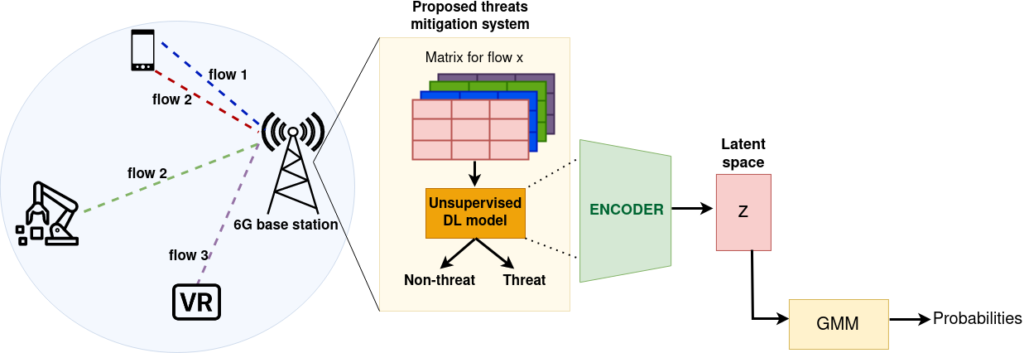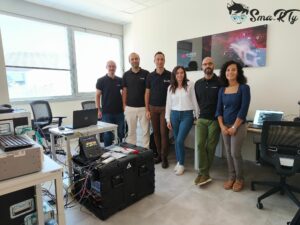With 6G networks on the horizon, communication architectures become assisted by AI that enhance security and intelligence. In our last research paper, a proactive threat discovery service at 6G base stations paves the way for network-wide cybersecurity. We propose an unsupervised deep learning to achieve high accuracy in identifying DoS attacks in evolved 5G/6G base stations.
Some highlights of the paper:
- 6G networks will rely on Artificial Intelligence (AI) for collective network intelligence, enabling autonomous operations and enhanced security
- DoS attacks, particularly new types, pose a significant threat to 6G networks, and traditional mitigation methods are becoming obsolete. AI-driven approaches, including unsupervised learning, are proposed to address these security challenges in real-time.
- The study demonstrates the use of a threat mitigation system based on convolutional auto-encoder and GMM for unsupervised malicious flow detection, providing insights into the system architecture and real-time protection capabilities.
- Different types of DoS attacks were studied, and the results showed varying performance in detecting these attacks based on the attack structure.
- The work paves the way for collective network intelligence at the edge, with potential collaboration between multiple nodes and the exploration of distributed learning techniques and architecture optimization.

“Real-time clustering based on deep embeddings for threat detection in 6G networks“, E. Paolini, L. Valcarenghi, L. Maggiani, N. Andriolli, IEEE Access, 2023. DOI: 10.1109/ACCESS.2023.3325721
Trials and deployments of sixth Generation (6G) wireless networks, delivering extreme capacity, reliability, and efficiency, are expected as early as 2030. Attempts from both industry and academia are trying to define the next generation network infrastructure. 6G will set in motion the fourth industrial revolution, delivering global, integrated intelligence. In this scenario, Artificial Intelligence (AI)-assisted architecture for 6G networks will realize knowledge discovery, automatic network adjustment and intelligent service provisioning. The long-term vision for implementing 6G security is to implement an autonomous, self-learning AI-assisted architecture that can perform threat mitigation without disrupting the normal use, enabling the resilience and reliability of the network and fulfilling security automation. This work proposes a first implementation of a proactive threat discovery service to be deployed at 6G base stations, paving the way for collective network intelligence in the context of cybersecurity mechanisms. Specifically, a fully unsupervised Deep Learning (DL) model is presented, able to recognize both Denial of Service (DoS) Hulk and DoS Goldeneye, with 97.0% and 92.2% mean F1-score respectively.
You can read the full paper here: https://ieeexplore.ieee.org/document/10287343
We are always committed to innovation, research, and we are very proud for this achievement! Stay tuned for more updates 🚀
#Research #Security #6G




